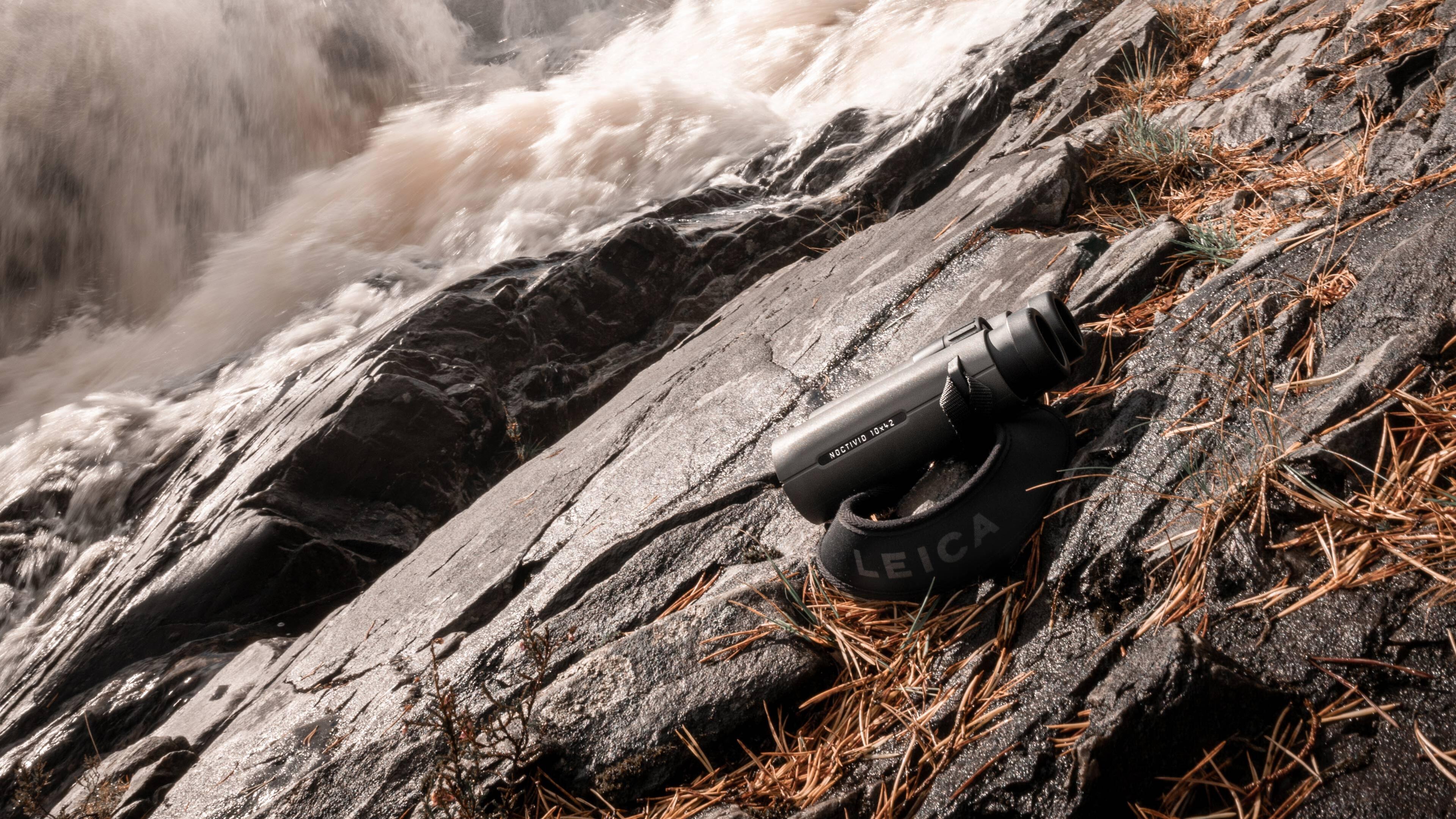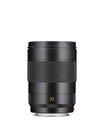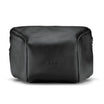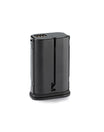Using the Leica SL2-S
The Leica SL2-S was announced in late 2020 and arrived on the market in early 2021. Since then, Leica have continually updated the camera through regular firmware updates, improving both the video and autofocus performance of the camera since its initial release. So, with the arrival of the third generation SL3 camera now available, how does the SL2-S fare in 2024?
For the last couple of months our coach Stuart has been using the Leica SL2-S with the 35mm f/2 Summicron lens. Not to be confused with the heavier, larger and highly regarded Leica f/2 Summicron APO lens, this ‘standard’ f/2 Summicron is lighter and more compact, yet still retains a level of weather resistance which is perfect for our British climate.
So, does this combination of Leica SL2-S and the ‘cheaper’ 35mm f/2 Summicron - SL lens still contain the ‘look’ that Leica are famed for? And could this be a perfect carry around lens for the Leica SL system?


Released after the Leica SL2, the SL2-S has differences in technical specifications, listed below.
- 24 Megapixel Full Frame Sensor
- ISO Range of 50 – 100,000
- 76 million-dot viewfinder
- 2 inch, 2.1 million dot touchscreen
- Up to 25 fps shooting
- 4K 60 fps shooting
- 5 axis in body stabilisation (IBIS)
- IP54 weather sealing
- Robust all metal body
Photo
Designed and made in Germany, the SL2-S has an all-metal body with IP54 specification, making it weather and dust resistant. This combined with the outstanding image quality from the 24-megapixel full frame CMOS BSI sensor make the SL2-S a robust choice for both the professional and keen amateur user. The sensor does without a low pass filter. The camera can capture as much detail as possible within its DNG files due to the sensitivity range that covers ISO 100 – 100,000 as standard, with a ‘pull’ option of ISO 50.
The hybrid shutter of the SL2-S works both mechanically and electronically. In the menu of the camera one can chose from hybrid, electronic or mechanical use. Using the mechanical setting eliminates any risk of rolling shutter distortion. Autofocus combines contrast detection and depth mapping, allowing up to 225 selectable points to cover the entire frame. Alternatively, one can choose from ‘zone’ autofocus of 25 autofocus points, which is often useful for moving objects, face and body detection autofocus or single focus point. I tend to use single point focus, that I either tap or toggle to via the joystick to where I wish within the frame.
Video
Videographers are catered for with the SL2-S as the camera is capable of 12-bit RAW video output at 60 fps in 4:2:2, unlimited video recording time with an outstanding L-Log colour space and full-size HDMI port allowing the camera to integrate seamlessly into professional video workflows. Video and stills have separate user interfaces so one can work in either photo or video without having to change settings. Bluetooth connectivity with the camera to a smartphone allows for a seamless transfer of videos and photos to the Leica FOTOS app, which works very well.
Shooting with the SL2-S
Anyone already familiar with Leica cameras will feel at home using the SL2-S and 35mm Summicron-SL lens. The camera itself features a simple and intuitive user interface which separates into photo or video functions. One click of the MENU button brings up the quick menu containing the most frequently used settings. A second click takes you to the full menu, with more specific and advanced settings. The SL2-S continues the 3-button layout of the SL2, M and Q cameras in terms of playback and operation. This design is simple to use and understand. The rear of the camera body has an on/off switch, a PLAY, FN and MENU button, a customisable FN button and a directional joystick. On the top plate is a small digital display showing selected settings. Another control dial on top allows you to click to choose between P, A, S and M modes. For each of these modes, users can choose which dial to use for exposure compensation.
The camera is very ergonomic, with the joystick easy to use and the FN buttons are easily in reach to quickly select settings. The customisability of these buttons is a really good feature for setting up the camera for your needs. Accessing shutter speed, aperture, ISO and focus areas is easy and intuitive. With a deeper grip that the original SL typ 601, the camera feels secure to hold, and combined with the lightweight and relatively short 35mm Summicron lens, the set-up is easy to carry one handed without fear of losing grip. In shape and layout, the camera is all but identical to the higher resolution SL2 for the exception of the LEICA lettering on the front of the camera being blacked out on the SL2-S, giving a more discreet look.

Real World Performance
I have been testing the Leica SL2-S and 35mm f/2 Summicron-SL lens for over a month and the real-world performance has left me impressed with both the camera and the lens. The camera starts up within a moment of the switch being turned on, and from there forth works efficiently in all the scenarios I put it through. The shutter button carries just enough weight to time a shot perfectly, and once fired is quiet, allowing one to be unobtrusive whilst working. The autofocus system is speedy and decisive, especially when used with the Summicron lens. Only twice did the AF hunt for focus, and in both instances, this was after dusk focusing on a low contrast horizon. I found some contrast by focusing on distant trees and the focus locked on immediately, even in almost complete darkness. By turning the focus ring of the lens, one automatically gets a magnified view of the scene in the viewfinder, enabling critical focus.
The low light performance on the camera is amazing, so having ‘just 24’ megapixels and no low pass filter helps to deliver such a fine image quality in low light situations. Noise is kept well under control at higher ISO sensitivities, with colours remaining strong at ISO 12,500, and I would even use ISO 25,000 without worry. At low ISO of 100 or 200, shadow details can be lifted by 3 or 4 stops to allow highlight detail to be maintained in high contrast shots. When using the ‘push’ ISO of 50, some highlight detail may be lost within high contrast scenes.

Metering I found to be accurate and reliable, as one can preview the exposure by half pressing the shutter button and exposure compensation can be dialled in quickly by turning the thumb wheel whilst holding the camera up to your eye. Auto white balance never needs adjusting manually, always being neutral and accurate in colour, especially with skin tones.
The camera stabilisation comes into its own in both low-light scenes and hand-held long exposures, and with the Summicron-SL attached I was able to get sharp images handheld at shutter speeds as low as half a second whilst shooting tumbling water and night scenes of the sky above Derbyshire without a tripod.

However, I did mount the camera onto a tripod for multishot mode…
Multishot Mode
The SL2-S may only have half the resolution of its bigger SL2 brother, but by no means does this limit its appeal to me. If one needs bigger files or requires the finest details, the SL2-S has its own multishot mode for a higher resolution output. Here, the sensor combines four images together to produce one final image file of 96 Megapixels. Multishot mode can be used with native SL lenses along with the Leica M lenses via the M-L Adapter. The camera needs to be kept steady for multishot mode to work properly, so the camera cannot be in handheld mode and requires a flat surface or a tripod. Indeed, if the camera senses any movement once multishot mode has been selected, it won’t proceed with the process until it senses no movement at all.
Whilst testing the camera I’ve used multishot mode on several occasions for high resolution landscape photography and have constantly been amazed by the quality of the files, which are extremely rich in detail, contrast and colour. For me, this adds to the appeal of the camera overall as it can be a fast focusing low light eater on most occasions and a high resolution beast on others! The only thing one needs to be mindful of in multishot mode is critical focus when shooting wide open at f/2 – here it is better to manual focus using the focus peaking switched on to gain critical sharpness. Shooting stopped down at f/8 or f/11, this is less important, but I still sought to be extra careful by positioning my focus point two-thirds into the frame when taking landscape images to gain consistent sharpness throughout the image. One also needs to be aware of any movement within the image, such as birds flying across the sky or people walking across the frame during multishot mode, as this can appear as ghosting within the final image.


Shot at f/2 Shot at f/5.6
Verdict
As a long-time Leica M User, I entered this review with a bit of apprehension – would I enjoy the process of photography with the Leica SL2-S? Well after 6 weeks of testing, I just can’t put the camera down and find it super-intuitive to use, especially with the excellent Summicron-SL prime lenses. They definitely have the ‘Leica Look’ that one hopes for, with phenomenal image colours and contrast. Fall off and separation when shooting wide open at f/2 is just lovely, with a smooth and creamy transition from sharp focus into the out of focus areas. Best of all is the quick and snappy autofocus and just how light and manageable package the Summicron-SL lenses are when paired with the camera. These lenses really make the system a walk around camera one can carry around all day without feeling uncomfortable.
Regardless of the type of environment that you use the camera in, or kind of subject that you wish to shoot, the Leica SL2-S is a robust and uncompromising tool that delivers exceptional images whether shooting stills or video. It’s a camera that I would highly recommend, so please feel free to contact me or any member of our team to arrange a Leica test drive with the SL2-S camera at Leica Store Manchester.


















Leave a comment
This site is protected by reCAPTCHA and the Google Privacy Policy and Terms of Service apply.